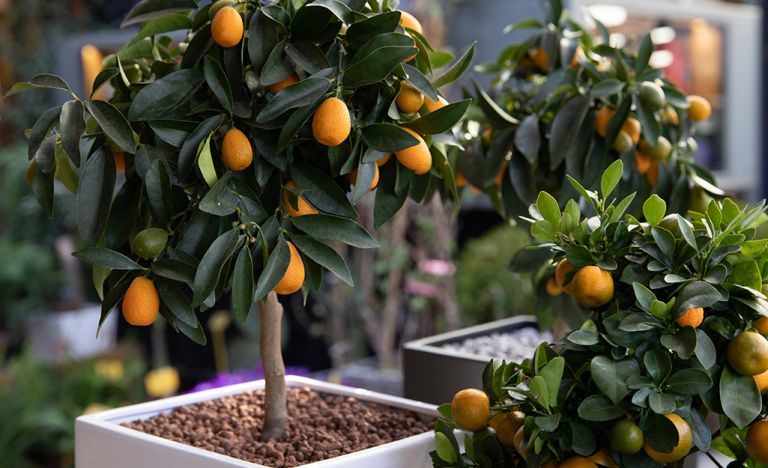
How to Extend Your Growing Season Indoors
When you grow indoor fruit trees, you can enjoy fresh produce year-round. The growing season may be fleeting outdoors, but the good news is that you can extend the bounty long after cold weather sets in.
Craving an edible yield of your own? Try turning your home into an unexpected orchard.
The Basics of Growing Fruit Trees Indoors
Dwarf citrus trees are created by grafting fruiting trees. While transplanting a bare-root specimen is possible, it requires effort and time to bear fruit. Instead, it’s recommended to start with a healthy, mature dwarf variety that’s already established, which takes less effort and fruits faster.
During warm summer months, indoor fruit trees benefit from outdoor sunshine. Acclimate the plant gradually to brighter sunlight by placing it outdoors in a shady spot for a few days before moving it into intense sunlight. If moving an outdoor tree indoors, reverse this process by bringing it indoors at night.
Encouraging Pollination and Managing Pests
As your plant grows, it may produce many blossoms, especially if it’s a citrus variety. Not all will bear fruit, but pollination can be aided by brushing the stamens with a soft paintbrush and moving between blooms.
Fruit trees, particularly citrus, can attract pests like spider mites, mealybugs, and scale. Regularly inspect the plant, paying attention to where the leaves join the stem. If pests are found, treat the plant with alcohol on a cotton swab or use insecticidal soap for spider mites.
Dwarf Fruit Tree Care: Light, Water, and Temperature
Indoor fruit trees, especially dwarf citrus, need ample light, ideally 12 hours of direct sunlight daily. They thrive in temperatures between 55°F and 85°F, with 65°F being ideal. During warmer months, they require more frequent watering, while cooler, lower-light environments need less water.
If you purchase a tree from a nursery, repot it right away. Loosen the roots and, if necessary, prune them lightly. Choose a pot that is just slightly larger than the original container, as moving into too large a pot can delay fruiting.
Planting and Watering Tips
Use light, airy potting soil mixed with perlite when planting. Fill the soil up to the original dirt line on the trunk, leaving enough space at the top of the pot for watering. After planting, water the tree well and place it in bright, direct light.
Ensure the soil doesn’t get too dry between waterings by checking with your finger or a skewer. Citrus trees, in particular, are heavy feeders and should be fertilized monthly with a multipurpose fertilizer that includes manganese, iron, and zinc.
Humidity and Placement Considerations
Because fruit trees love humidity, add moisture to the air with a humidifier, mist the plant, or use a pebble-filled tray with water. Avoid placing the tree near vents or drafty areas, and consider adding grow lights to supplement natural light.
Best Indoor Fruit Trees for Beginners
Light is crucial for fruit-bearing trees, so starting with low-light options is a wise choice. Once experienced, try growing brighter-light varieties. Some ideal choices include:
- Fig: Varieties like Brown Turkey thrive with loamy soil and bright northern light.
- Olive: Choose Picholine or Arbequina varieties, which require less water in cooler months.
- Avocado: Wurtz and Gwen varieties are self-pollinating and benefit from sandy potting soil.
- Banana: Super Dwarf Cavendish and Dwarf Red varieties do well in light peat-based soil.
- Mulberry: The Dwarf Everbearing variety produces tart, blackberry-like fruit.
- Meyer Lemon: This variety thrives with eight-to-12 hours of direct sunlight daily.
- Kumquat: Dwarf Nagami trees are self-pollinating and require well-drained potting mix.
- Lime: Kaffir and Key lime varieties need eight-to-12 hours of sunlight and slightly acidic soil.
- Orange: Calamondin trees are best suited to indoor growing conditions.
- Apricots: Dwarf Moorpark or Goldcot varieties thrive in loamy soil with six-to-eight hours of sunlight daily.
Why Growing Indoor Fruit Trees is Rewarding
Fruit trees are aesthetically pleasing, fragrant, and functional. Not only do they brighten your home, but they also provide a fun and rewarding way to enjoy fresh, home-grown produce throughout the year.


